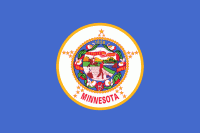|
Trails to the Past
would appreciate any genealogy information that you may
have such as news items, wills, deaths, births,
biographies etc. if you have any of these items they can
be emailed to Marie Miller the state of
Minnesota Adminstrator
The county was
founded in 1855. It is named for Jean-Baptiste
Faribault, a settler and French fur trader among the
Sioux Indians.
 Jean-Baptiste
Faribault (October 19, 1775 – August 20, 1860) was a
trader with the Indians and early settler in Minnesota.
His father, Barthélemy Faribault, a lawyer of Paris,
France, settled in Canada towards the middle of the 18th
century and served as military secretary to the French
army in Canada. After the occupation of the country by
the English, he retired to private life in Berthier and
he held the office of notary public. Jean-Baptiste
Faribault (October 19, 1775 – August 20, 1860) was a
trader with the Indians and early settler in Minnesota.
His father, Barthélemy Faribault, a lawyer of Paris,
France, settled in Canada towards the middle of the 18th
century and served as military secretary to the French
army in Canada. After the occupation of the country by
the English, he retired to private life in Berthier and
he held the office of notary public.
Faribault was born
in Berthier, Lower Canada, and received a good school
education; after several years of mercantile employment
in Quebec, he entered the fur trade, most probably in
the employ of Parker, Gerrard, and Ogilvy. In May 1798,
he went with others to the island of Michilimackinac or
Mackinac, one of the depots of this company. For over
ten years, he traded with the Pottowatomic Natives at
Kankakee, with the Dakota or the Sioux, Natives at
Redwood, on the Des Moines river, and at Little Rapids,
on the Minnesota River just upstream of present-day
Carver, Minnesota, on behalf of the Northwest Fur
Company.
During his
residence at Little Rapids, in 1805, he was married to
Elizabeth Pelagie Ainse, a half-Dakota daughter of
Joseph-Louis Ainse, a British superintendent at
Mackinac. In 1809, he settled in the small village of
Prairie du Chien, Wisconsin, and commenced trading, on
his own account, with the Indians of the Winnebago, Fox,
and Sioux tribes. In addition to that, he conducted an
exchange of lead with Julien Dubuque, at the point now
occupied by the city of that name.
During
the War of 1812, Faribault refused to enlist in the
English army, and suffered imprisonment and the loss of
all his goods in consequence. After the conclusion of
the war, in 1815, he became a citizen of the United
States, and recommenced his trade at Prairie du Chien.
In 1819, he removed to Pike Island in the Mississippi
River, and in 1826 to St. Peter (Mendota, Minnesota),
opposite the military post of Fort Snelling. There he
remained until the last years of his life, which were
spent with his children in the town of Faribault,
Minnesota, which is named for his eldest son. Faribault
County in southern Minnesota was named after
Jean-Baptiste.
He was much
attached to the Roman Catholic faith of his childhood
and presented a house for a chapel to Father Lucien
Galtier, the first resident missionary in Minnesota
(1840). He died at Faribault, Minnesota, on August 20,
1860.
|
On Line
Data |
 |
|
| |
Cities
Blue
Earth (county
seat)
Bricelyn
Delavan
Easton
Elmore
Frost
Kiester
Minnesota
Lake
Walters
Wells
Winnebago
Unincorporated
communities
Baroda
Brush
Creek
Dell
Guckeen
Huntley
Marna
Pilot
Grove
Ghost towns
Clayton
Homedahl
|
Townships
Barber
Township
Blue Earth City Township
Brush
Creek Township
Clark Township
Delavan
Township
Dunbar Township
Elmore
Township
Emerald Township
Foster
Township
Jo Daviess Township
Kiester
Township
Lura Township
Minnesota Lake
Township
Pilot Grove Township
Prescott
Township
Rome Township
Seely
Township
Verona Township
Walnut Lake
Township
Winnebago City
Township
|
The information
on Trails to the Past © Copyright may be used in personal family history research, with source citation. The pages in entirety may not be duplicated for publication in any fashion without the permission of the owner. Commercial use of any material on this site is not permitted. Please respect the wishes of those who have contributed their time and efforts to make this free site possible.~Thank you! |



